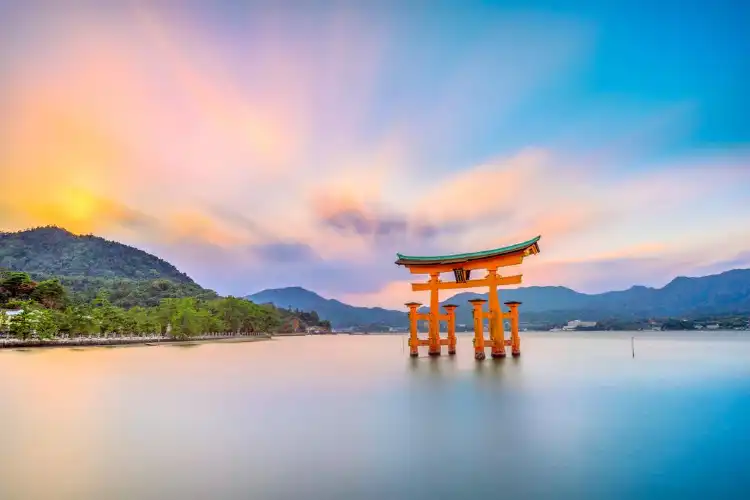
Best Hatsukaichi Hotels
Enter your dates for prices and availability of the best hotels in Hatsukaichi.
Swipe up to view more
Filter by:
Hotel Star Rating
≤2345
Popular Filters
Amazing 4.5+Great 4.0+Good 3.5+Pleasant 3.0+66 Best Hotels to Stay in Hatsukaichi
Select your travel dates for best hotels in Hatsukaichi, featured by Trip.com based on guests reviews!
Most Booked
Lowest Price
Closest to Downtown
Highest Rated



Hotel near Hatsukaichi
GGuest User 2024.02.18
The open-air bath on the room was very good. There is also a large communal bath on the 9th floor. The scenery is very good, so we recommend the 5th and higher floors.
52 reviews
3.9/5
Price from
AED 427
per night



Hotel near Hatsukaichi
GGuest User 2023.05.29
I used it for the first time this time.
Sakashima Shrine, Pinghe Park
The hotel also wrote that it was not so painful that I was worried about the sound of the denshi by word of mouth
My friends were happy to have this comfortable hotel for the first time
It was more than the price
I would like to use it if I have another chance.
17 reviews
3.9/5
Price from
AED 373
per night
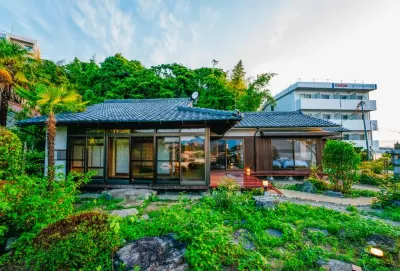
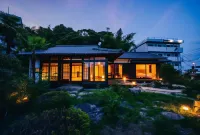

Hotel near Hatsukaichi
GGuest User 2024.04.09
Incredible traditional Japanese house, newly renovated with everything you need for comfort. The kitchen is extremely well-stocked for us to prepare our own meals. The garden is beautiful and you can enjoy ocean view and sunrise from the house, there’s even a blooming Cherry Blossom tree in the garden. Just a tip to keep the sliding doors closed properly because mosquitoes do get in. Couldn’t have asked for a better stay.
Perfect
1 review
5.0/5
Price from
AED 1,009
per night

You Might Like
Hatsukaichi Hotels With BreakfastHatsukaichi Hotels With Twin RoomHatsukaichi Hotels With 1 Double BedHatsukaichi Hotels With Swimming PoolHatsukaichi Hotels With Free Cancellation



Hotel near Hatsukaichi
Located in Hatsukaichi, OUCHI HOTEL Hatsukaichi-ekimae is within a 15-minute drive of Setonaikai National Park and Hiroshima Green Arena. This apartment is 6.4 mi (10.3 km) from Itsukushima Shrine and 5.7 mi (9.1 km) from Miyajima Ferry Terminal.
Featured amenities include express check-out and laundry facilities.
Make yourself at home in one of the 8 guestrooms, featuring kitchenettes. Rooms have private balconies. 40-inch flat-screen televisions with digital programming provide entertainment, while complimentary wireless internet access keeps you connected. Private bathrooms with separate bathtubs and showers feature deep soaking bathtubs and complimentary toiletries.
5 reviews
3.8/5
Price from
AED 203
per night

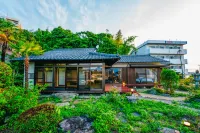

Hotel near Hatsukaichi
GGuest User 2022.12.24
Absolutely beautiful traditional Japanese House, well-equipped and immaculately clean. Lovely location near the bay, with a (somewhat distant) view of Miyajima Shrine. Excellent communication from the operator (despite something of a language barrier).
Electronic check-in was a fairly lengthy process, involving photos of faces and passports and detailed typing in a non-Romaji-friendly keyboard; but that was only a very minor quibble in what was otherwise a delightful stay. Highly recommended!
Outstanding
2 reviews
4.8/5
Price from
AED 1,908
per night


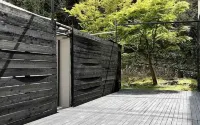
Hotel near Itsukushima Island,Hatsukaichi 100% of visitors choose this area
すすん 2022.04.03
It was great. It is a guest house in Miyajima. We stayed with 3 people. It was about 25000 yen a night.
The room is very large !! I thought it was in a house. There was also a veranda in the room on the first floor. It is with kitchen ♪ There is also a counter seat, and it is not troublesome for a place to eat and drink.
The location is in front of Miyajima ferry terminal.
Outstanding
13 reviews
4.8/5
Price from
AED 517
per night


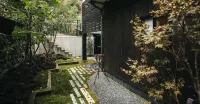
Hotel near Itsukushima Island,Hatsukaichi 100% of visitors choose this area
With a stay at Miyajima Shiro in Hatsukaichi (Itsukushima), you'll be steps from Miyajima Aquarium and 4 minutes by foot from Itsukushima Shrine. This guesthouse is 0.1 mi (0.1 km) from Daisho-in and 0.4 mi (0.6 km) from Five-Story Pagoda.
Take in the views from a garden and make use of amenities such as complimentary wireless internet access and concierge services.
Featured amenities include express check-in, express check-out, and multilingual staff.
Stay in one of 3 guestrooms featuring flat-screen televisions. Complimentary wireless internet access keeps you connected, and digital programming is available for your entertainment. Bathrooms feature bathtubs or showers, complimentary toiletries, and hair dryers.
6 reviews
3.6/5
Price from
AED 812
per night



Hotel near Hatsukaichi
Miyahama Onsen is the closest onsen village to Miyajima Island
Outstanding
6 reviews
4.6/5
Price from
AED 919
per night



Hotel near Hatsukaichi
With a stay at Bettei Fujiya in Hatsukaichi, you'll be within a 5-minute drive of Setonaikai National Park and Miyahama Hot Spring. This hotel is 5.6 mi (8.9 km) from Itsukushima Shrine and 4.8 mi (7.7 km) from Miyajima Ferry Terminal.
Enjoy recreation amenities such as hot springs or take in the view from a garden.
A complimentary Japanese breakfast is served daily from 8:00 AM to 10:00 AM.
Free self parking is available onsite.
Treat yourself to a stay in one of the 7 individually decorated guestrooms, featuring indoor private hot tubs. Complimentary wireless internet access is available to keep you connected.
Perfect
4.9/5
Price from
AED 2,749
per night



Hotel near Hatsukaichi
"Miyahama hot spring", being the nearest hot spring village to Miyajima island.
Excellent
5 reviews
4.5/5
Price from
AED 532
per night
What Travelers Said About the Best Hotels in Hatsukaichi
See all
Browse these genuine traveler ratings and real guest reviews to find the best Hatsukaichi hotels.
4.7/5
Outstanding
AAnonymous UserThe hotel is new and clean. Although the room is small, it is comfortable and clean. The bed is firm, but comfortable to sleep on. The buffet food was not very varied but adequate. It would be best if you could have all-you-can-drink drinks at no extra charge, which would be a bonus. Miyajima Great Torii is just across the sea, and it is very convenient to drive to the nearby pier. Overall very satisfied.
Grandvrio Hotel Miyajima Wakura - Route Inn Hotels -
Hotel near Hatsukaichi
Price per night from:AED 272
4.6/5
Outstanding
GGuest UserThe hotel can provide free delivery service! Be sure to contact the hotel in advance! The hotel is also quite far from the pier, and there is a flight of stairs to get there, but because of this, the room can see the big torii! One night and two meals are good, and the hot spring private bath is also good! When you leave, you can store your luggage, and then go to the pier to play, and ask the tourist center at the pier to call the hotel and ask them to send your luggage to the pier, free of charge!
Jukeiso
Hotel near Itsukushima Island, Hatsukaichi 100% of visitors choose this area
Price per night from:0
4.5/5
Excellent
GGuest UserThe hosts at this Ryoken are so welcoming, friendly and helpful! They picked us up from the ferry terminal when we arrived and dropped us back there on departure. This was crucial as we would have otherwise struggled with our suitcases up the hills and through the labyrinth of small streets! The location is a little bit away from the central area, but that is what we wanted. It was so peaceful at night, the deer wandered past our the front as we relaxed in the open air footpath. The food was nothing short of excellent. They specialise in seafood dishes so if you have an allergy it would be important to let the hosts know before you arrive. The rooms were simply and elegantly appointed: we had everything we needed. The onsen onsite was fantastic! After a long day of walking we felt very relaxed afterwards.
Thank you so much to the hosts for making our stay on Miyajima unforgettable!
Kikunoya
Hotel near Itsukushima Island, Hatsukaichi 100% of visitors choose this area
Price per night from:AED 862
4.3/5
Excellent
GGuest UserFelt welcomed by the hotel staff, shared rooms have properly divided beds. Fully equiped with basic amenities such as shampoo, body gel, towels, lockers...
The lounge was full of books to read (tourism books, novels, manga...) and is tastefully decorated. Family-friendly place.
Close to the local train line that travels to Miyajimaguchi harbour (Ferry to the island) in barely 6 minutes.
Great experience overall.
4.3/5
Excellent
GGuest UserThe hotel is in a good location, right outside the Hiroden Miyajima Exit Station (including the Ueshima Exit), and it takes a short walk to get to the JR station.
The view from the sea view room is nice, the room is large, and the decoration is a little old, but the style is grand and clean, and some cleaning details are very good.
The hotel gave two bottles of local specialty sparkling drinks and two breakfasts for the next day, and we dined at Miyajima Caffee next to the hotel.
The overall hotel has a good value for money. If you come to Miyajima, it is recommended to stay for one night.
4.3/5
Excellent
ウウメちゃんI stayed with my family.
Our room faced the sea, but since it was on the second floor, there was a building right in front of it, so I was wondering if the view would be good, but it was nice because we could see the Otorii gate.
When I checked in, I was told that the check-out time was 10:00, but when I made the reservation, it was 12:00, so I explained that to them, and they took care of me, thank you very much.
I am very satisfied with the food and the bath. I want to use it again.
Hotel Miya Rikyu
Hotel near Itsukushima Island, Hatsukaichi 100% of visitors choose this area
Price per night from:AED 977
4.2/5
Very Good
ZzhanIf you ca n’t find the hotel name, you can see the photo below. After the hem ferry, let the hotel call the hotel at the information desk. It will send a car to pick you up.
The neighborhood is large, with an indoor balcony, the bathroom is separated from the wet and dry, facing the sea, and the facilities are a bit dated.
Dinner is the kind of kaiseki that is scheduled in the restaurant in advance, but each dish is super mini. Even the plate is not as big as a woman's palm. The dishes are as small as half a mouthful and the taste is not enough. It ’s only half a bowl of miso soup to fill up with the last bowl of rice. Girls are okay, men are not full. Fortunately, a small shop in the lobby has snacks and instant noodles, but it ’s full because there ’s no shop. Breakfast seems better than dinner.
There is a small soup to make.
Miyajima Morinoyado
Hotel near Itsukushima Island, Hatsukaichi 100% of visitors choose this area
Price per night from:AED 923
4.1/5
Very Good
GGuest UserI used it for the second time because the food was good. The reviews were bad, but it wasn't that bad, so I came with my family. The room was 606 and the reservation at the time was for an ocean view, but when I opened the window, it was a mountain. I was deceived 😭 The room was spacious and nice, but it's a hot spring hotel, so there was nothing to hang the towels I used, so I had to hang them on a hanger and use them again... I had the same problem the first time, so I called the front desk and they said they didn't have them, and they lied 😅 They said they would give me a replacement bath towel if I went to the front desk, but I don't want a troublesome bath towel 😔 If they give it to me every time I go to the hot spring, I would like them to put it in the bath. Is it a foreign company? Maybe it's good because foreigners don't take baths that often. It's a shame because the food is good. It's a shame.
LiVEMAX RESORT AKI MIYAJIMA
Hotel near Itsukushima Island, Hatsukaichi 100% of visitors choose this area
Price per night from:AED 456
3.9/5
GGuest UserGood.
As other reviews, it was a facility that felt a little old, but it was a stable and safe facility, and there was no mistake.
The view is good, but if it is on the 3rd floor in the ocean view room, there is a disappointment because the ceiling on the 2nd floor is about 10 meters in front of the room.
When I told him at the front desk at check-in, ”This is ○○ (my name) booked at Trip.com,” the expression of the veteran female staff became a little steep. And if it is another hotel, he immediately finds my name from the guest list, saying ”Yes, ○○”, but he does not respond like that. ”First, please fill in your name here.” It felt as if I was told, ”I'm in trouble if I call my name, please write my name on this paper, that's how our hotel is doing.” (There may be a story that my feelings are damaged, but it was true that the expressions of the staff became steep). It was a little disappointing.
The night cruise was good.
2.7/5
旅旅遊N次過客Good location, very close to the station and the pier, there are staff at check in, the staff is also very friendly and willing to help, the bed in the room is clean, the fork plug is not enough, Pantry is narrow and a bit messy, and the price is low.
FAQs About Hatsukaichi Hotels
What are the best hotels in Hatsukaichi?
Whether you're planning a business trip or a vacation, Hatsukaichi has many top-rated hotels to choose from. Grandvrio Hotel Miyajima Wakura - Route Inn Hotels -, LiVEMAX RESORT AKI MIYAJIMA and Hotel Miyajima Villa are among the best choices for your stay.
How much is a hotel in Hatsukaichi on average?
The average price for hotels in Hatsukaichi is AED 1,262 on weekdays, and AED 1,417 on weekends (Friday-Saturday).
What are the best hotel deals in Hatsukaichi?
Find the best hotel deals and promotions on Trip.com, available year-round for both first-time and loyal users. Please check the promotions page to see what promotions are available now on Trip.com.
Which hotels in Hatsukaichi offer airport shuttle services?
Getting to your accommodation in Hatsukaichi is easy with hotels that offer airport shuttle services. Grandvrio Hotel Miyajima Wakura - Route Inn Hotels -, LiVEMAX RESORT AKI MIYAJIMA and Aki Grand Hotel & Spa provide convenient airport shuttle services.
What are the best pet-friendly hotels in Hatsukaichi?
Miyajima Shiro is pet-friendly. Bring your pets along for an enjoyable stay!
What are the best hotels with a spa in Hatsukaichi?
A spa hotel can make your trip more enjoyable with relaxing amenities. Grandvrio Hotel Miyajima Wakura - Route Inn Hotels -, LiVEMAX RESORT AKI MIYAJIMA and Hotel Miyajima Villa are great choices for spa hotels offering quality services.
What are the best luxury hotels in Hatsukaichi?
In Hatsukaichi, you’ll find a range of luxury hotels known for their unique designs, premium amenities, and outstanding experiences. Sekitei is a highly rated luxury hotel for an unforgettable stay.
Which hotels in Hatsukaichi provide fitness facilities?
Grandvrio Hotel Miyajima Wakura - Route Inn Hotels -, LiVEMAX RESORT AKI MIYAJIMA and Aki Grand Hotel & Spa include fitness facilities, so you can maintain your routine while traveling. Stay on track with your fitness goals while on the go!
Which hotels in Hatsukaichi have pools?
Grandvrio Hotel Miyajima Wakura - Route Inn Hotels -, LiVEMAX RESORT AKI MIYAJIMA and Aki Grand Hotel & Spa are excellent options for hotels with swimming pools. Book your stay to enjoy the pool and make your trip more enjoyable.
Which hotels in Hatsukaichi have the best breakfast?
Begin your day with a tasty and satisfying breakfast! Sekitei, LiVEMAX RESORT AKI MIYAJIMA and Aki Grand Hotel & Spa provide the best breakfast to start your day.
What are the best hot spring hotels in Hatsukaichi?
Hotels with hot springs provide a perfect way to relax and recharge during your stay. Grandvrio Hotel Miyajima Wakura - Route Inn Hotels -, LiVEMAX RESORT AKI MIYAJIMA and Hotel Miyajima Villa include hot springs for a truly relaxing experience.
Hatsukaichi Hotels Info
| Highest Price | AED 7,510 |
|---|---|
| Lowest Price | AED 147 |
| Number of Reviews | 1,285 |
| Total Properties | 66 |
| Average Price(Weekday Night) | AED 1,262 |
| Average Price(Weekend Night) | AED 1,417 |